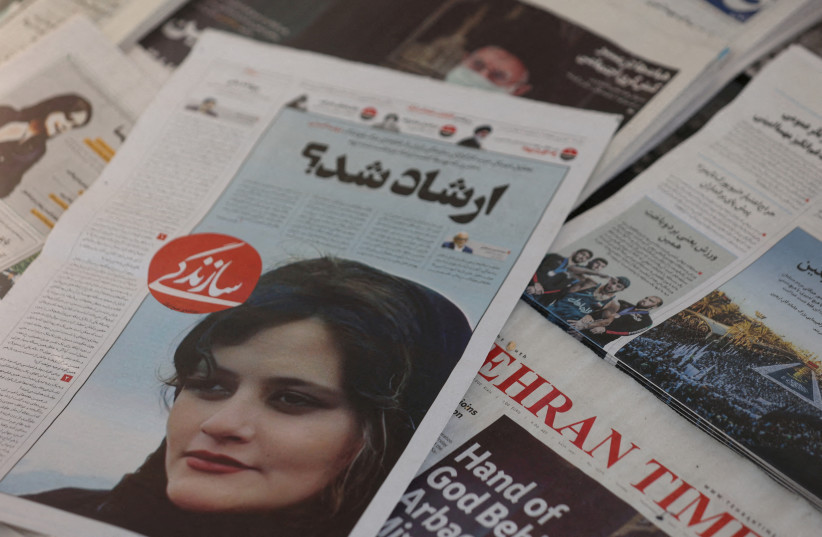Iran’s regime knows that it has to tread carefully as protests have spread across parts of the country in the wake of the police killing of a woman. The regime knows this because it has signaled since last week that the killing of Mahsa Amini was not on purpose.
The regime also knows that murdering a young Kurdish woman will not go over well in the Kurdistan region. This is because it is attacking two of the regime’s vulnerable points; the regime’s war on women and the regime’s suppression of minorities.
Iran’s regime has always tried to walk a fine line between its willingness to use force, and the fact that it wants a veneer of legitimacy. Iranian heads of state go abroad and know that people are watching back home and that foreign countries are watching the behavior of the regime.
This is why the regime is both brutal and enables some low level forms of dissident behavior. As such, the Iranian regime is not as all-encompassing in its authoritarianism as China, Russia, Turkey, Belarus or other regimes it hangs out with.
The fact that Iran’s leadership often faces protests shows that it knows its hold on power is tenuous. What keeps it in power is not mass killings, although it is willing to resort to that, but rather some kind of balance between the center in Tehran and the periphery.
Iran is chaotic, its infrastructure often substandard and the country is constantly trying to rush resources to areas struck by natural disasters. It often has to use its IRGC to provide some of these basic services. It wasn’t long ago that an apartment collapse caused protests, and, before that, there have been other issues. The regime knows that it has to constantly juggle the problems and keep a lid on a dozen different fires.
This is the case now as the regime must confront growing protests over the death of Amini. Even as the Iranian leader President Ebrahim Raisi went abroad this week to the UN, the nation’s police are dealing with protests.
How the protests in Iran began
The protests began in the Kurdish regions, where people are angry that a young woman was seemingly kidnapped by “modesty” police and then beaten into a coma and killed. Protests and shop closures in the Kurdish region have shown that the average people despise the regime. They were quick to take down symbols of the country and confront police.

Both today and yesterday have seen protests in Iran, including protests by many women who are angry about the police’s abuses. Images posted online have shown a woman cutting her hair in public or burning her headscarf. These may seem like things people take for granted in the West, but in a regime that polices how women dress and act, it is a sign of revolution. Iran’s regime leader can dictate to female reporters abroad in the West how to dress in interviews, but, at home, the regime is facing an incensed public.
So far, six people have been reported killed, but the toll will likely climb. The continuing protests are now receiving more global condemnation and attention. This comes as Iran is trying to court some favors at UN meetings.
At the same time, the protests will provide new wind in the sails of Kurdish movements that have opposed the theocratic rule of the Mullahs for decades. Any attacks on the Kurdish minority will further anger the people. Already, the anger has spread to the Kurdish autonomous region of Iraq as well. In addition, Iran’s regime may try to distract through more attacks on the US or other countries in the region, such as Israel. A rocket attack on September 18 targeted US forces in Syria, for instance.
Regime goes into damage control with conspiracy narrative
So far, the regime has responded by spreading conspiracies about “counter-revolutionary elements” and has called the killing of Kurds by security forces “suspicious.”
These articles at pro-IRGC media, such as Fars News, do not go far enough in convincing people and it is clear that the regime is struggling to find a narrative. Which narrative is it? Did some wayward police make a mistake, or is this an international conspiracy driven by opposition media?
The regime doesn’t know and is afraid.
